Why Keyword Search Volume is so important? For beginner its important to know why search volume is crucial for driving traffic to your website. Keyword search volume is also important for particularly website SEOs.
It is key metric that for beginners need to understand to rank for keywords with the budding to bring high traffic for your business website.
In this blog, we will reveal the best execution for embracing search volume into your SEO strategy and marketing. We’ll also explore how to search keyword search volume and more.
What is Keyword Search Volume?
Keyword search volume is a vital metric in digital marketing that shows how many times a specific keyword or phrase is searched on search engines like Google within a set timeframe, often per month. For marketers, this data reveals the popularity and demand for particular topics, helping them understand what their target audience is actively looking for.
Through monitoring keyword search volume, marketers can strategically select high-performing keywords to optimize their content, improve search engine ranking, and drive relevant traffic to their websites. It also assists in balancing competition and opportunity, permitting marketers to target both high-volume and niche keywords for maximum impact.
Below you can see the standard number of monthly searches volume for your keyword.
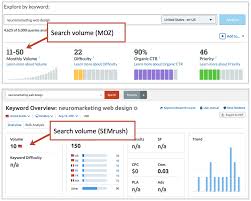
Why is checking Search Volume so important?
searched, they can identify what their target audience is interested in and tailor their content accordingly.
High Search Volume indicators popular topics that can drive more traffic, while low search volume might uncover niche opportunities with less competition.
This insight is crucial for planning effective SEO strategies, optimizing ad campaigns, and creating content that ranks well in search engines.
Ultimately, checking search volume ensures marketing efforts are focused, data-driven, and aligned with audience intent.
The Factors affecting monthly Search Volume
Here are the key factors affecting monthly on search volumes:
- Seasonality: Search volume usually fluctuates based on the time of year. For example, keywords like “Christmas gifts” or “Summer dresses” spike during specific seasons, Understanding seasonal trends helps marketers align campaigns with consumer behavior.
- Geographic Location: Search interest varies from region to region. A keyword may have high search volume in the U.S. but low in another country. Location-based targeting is important for local SEO and global effort planning.
- Trending Topics: News, social media buss, or sudden events can cause a rapid increase in search volume, For example, a celebrity endorsement or vital TikTok trend can make a previously low-volume keyword surge overnight.
- Consumer Interest & Market Demand: As consumer needs shift, so does keyword popularity. For instance, during a health crisis, keywords related to safety, medicine, or remote work may suddenly become high-volume.
- Keyword Synonyms & Variations: Users might search the same intent with different words. For example, “cheap flights” vs. “budget airfare.” The distribution of search volume across these variation affects the monthly count of each.
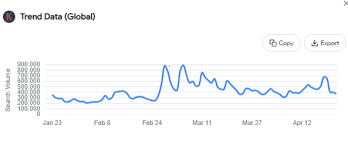
How to use Keyword Research Tools to Analyze Search Volumes
1. Select a Keyword Research Tool
Start through selecting a reputable keyword research tool. Some popular options include:
- Google Keyword Planner (free with a Google Ads account)
- Ahrefs
- SEMrush
- Ubersuggest
- Moz Keyword Explorer
Above each tool offers various features, but all can help you find keyword ideas, search volumes, and competition levels.
2. Enter A Seed Keyword
Type a broad or general keyword related to your topic or niche as like “online business”, fitness tips:, or digital marketing.” This is called a seed keyword and serves as the starting points for discovering related terms.

3. Analyze Monthly Search Volume
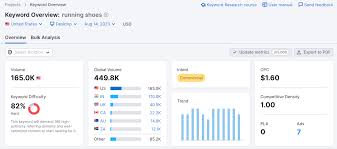
Monthly search volume: Shows how many times that keyword is searched in a typical month.
Global vs. local volume: Some tools shoe global volume and break it down by country or region.
Volume trends: Charts or graphs often show how the keyword’s popularity changes over the time.
Look for keywords with consistent or growing volume that match your content goals.
4. Assess Keyword Difficulty or Competition
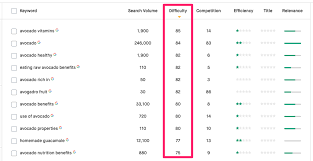
5. Discover Related & Long-Tail Keywords
Keywords tools suggest related phrases and long-tail keyword-longer, more specific queries like:
- “how to start an online business from home”
- “best fitness tips for beginners”
These often have lower competition and higher intent. making them easier to rank for and more likely to convert.
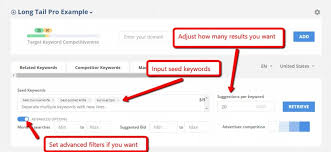
6. Use Filters to Refine Results
Most tools let you filters keyword results by:
- Location (country, city)
- Language
- Search networks (Google, Bing, etc.)
- Search volume range or competition level
These filters help target your specific audience more effectively.
7. Trac and Compare Trends Over Time
Use the trend analysis features to check whether a keyword is:
- Rising in popularity
- Stable
- Declining
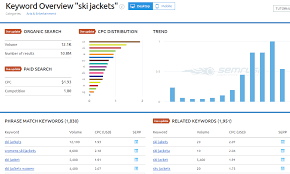
This will help you plan evergreen or timely content more accurately.
By following these steps, you can turn keyword research into actionable insights that boost your SEO, attract more traffic, and help grow your online presence strategically.
Benefits of using Search Volume for Businesses
Understanding and utilizing keyword search volume offers multiple advantages for businesses aiming to grow their online presence and connect with their target audience. Here are the key benefits:
- Informed Content Creation: By analyzing search volume, businesses can identify what their audience is actively searching for. This enables them to create content that directly addresses user interests, increasing relevance and engagement.
- Improved SEO Strategy: High search volume keywords help guide SEO efforts by targeting terms that people frequently use. Optimizing website content with these keywords can lead to better rankings, more visibility, and increased organic traffic.
- Smarter Paid Advertising (PPS): Search volume data supports businesses choose the most cost-effective and high-impact keywords for their par-per-click efforts. This ensures better ROI by targeting keywords with strong performance potential.
- Competitive Advantage: Trough researching keyword trends and search volumes, businesses can discover untapped or underused terms their competitors my be missing. This opens up new opportunities in the market.
- Better Understanding of Market Demand: Search volume reflects real-time consumer interest. Tracking it helps businesses anticipate market shifts, adapt their offerings, and respond to changing customer needs effectively.
- Increased Product or Service Positioning: Knowing which keywords have high search volume allow businesses to tailor their product descriptions, service pages, and marketing messages to match the language and wants of their ideal customers.
- Data-Driven Decision Making: Search volume provides factual insights that help strategic decisions in content marketing, product development, customer engagement, and more-reducing guesswork and boosting outcomes.
Moreover, using search volume data empowers businesses to become more customer-focused, competitive, and effective in both digital marketing and overall brand positioning.
Which Keyword Search Volumes Should you be targeting?
When selecting which keyword search volumes to target, it’s not just about going after the highest numbers-it’s about finding the right balance between search volume, competition, and user intent. Here’s how to decide:
High Search Volume Keywords (1,000+ searches/month)
- Attract large traffic but are highly competitive
- Ideal for strong, established websites with good domain authority
- Good for long-term SEO and brand visibility
Medium Search Volume Keywords (100-1,000 searches/month)
- Balanced in traffic and competition
- Easier to rank for, suitable for growing websites
- Ideal for blogs, products pages, and targeted content
Low Search Volume Keywords (<100 searches/month)
- Less traffic but usually high targeted and specific
- Great for new websites and niche topics
- Useful for king-tail keyword strategies and high conversion potential
Long-Tail Keywords (usually low volume but specific intent)
- Longer, detailed search phrases
- Lower competitions, higher conversion rate
- Excellent for answering precise user queries
Recommended Strategy:
New sites: Focus on low to medium-volume long-tail keywords
Established sites: Use a mix of all three to capture both traffic and conversions
Content-based strategies: Align keywords with user intent (informational, navigational, transactional)
Bottom Line
Keyword search volume is not just about numbers; it’s about strategically connecting with what your audience is actually looking for. I am sure, this post will help you to check your keyword search high-low volume and give you complete guide which keyword will be beneficial to bring traffic and SEO ranking.





